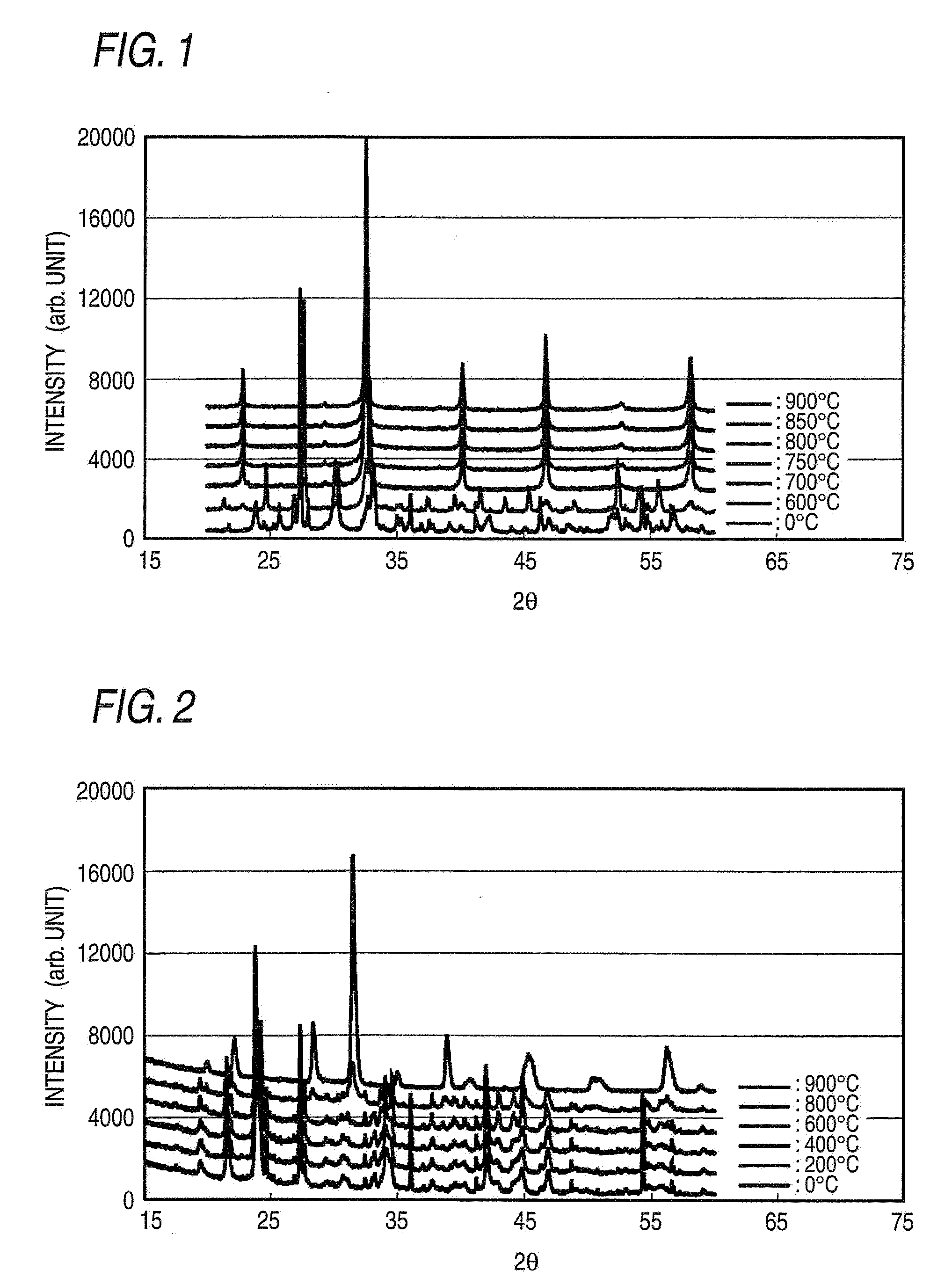Semiconductor ceramic composition and process for producing the same
a technology of semiconductor ceramics and compositions, applied in the direction of electrical equipment, inorganic chemistry, conductive materials, etc., can solve the problems of inability to obtain desired characteristics and incomplete solid solutions, and achieve the effect of enhancing the sinterability of the composition and ensuring the resistivity of the composition
- Summary
- Abstract
- Description
- Claims
- Application Information
AI Technical Summary
Benefits of technology
Problems solved by technology
Method used
Image
Examples
example 1
[0052]BaCO3 and TiO2 as main materials and Nb2O5 as a semiconductor ingredient powder were prepared and blended so as to be Ba(Ti0.998Nb0.002)O3, followed by mixing in pure water. The obtained mixed material powder was calcined at 1000° C. for 4 hours to prepare a Ba(TiNb)O3 calcined powder.
[0053]Na2CO3, Bi2O3 and TiO2 as material powders were prepared and blended so as to be (Bi0.5Na0.5)TiO3, followed by mixing in ethanol. The obtained mixed material powder was calcined in air at 600° C. to 900° C. for 4 hours to prepare a (BiNa)TiO3 calcined powder. FIG. 1 shows the X-ray diffraction patterns of the obtained (Bi0.5Na0.5)TiO3 calcined powder at different calcination temperatures of from 600° C. to 900° C.
[0054]The Ba(TiNb)O3 calcined powder and the (BiNa)TiO3 calcined powder calcined at 800° C. were blended so as to be 73 / 7 in a molar ratio, then 0.4 mol % of SiO2 and 1.4 mol % of CaCO3 were added thereto as sintering promoters, and these were mixed and crushed in a pot mill with p...
PUM
| Property | Measurement | Unit |
|---|---|---|
| temperature | aaaaa | aaaaa |
| temperature | aaaaa | aaaaa |
| Curie temperature | aaaaa | aaaaa |
Abstract
Description
Claims
Application Information
 Login to View More
Login to View More - R&D
- Intellectual Property
- Life Sciences
- Materials
- Tech Scout
- Unparalleled Data Quality
- Higher Quality Content
- 60% Fewer Hallucinations
Browse by: Latest US Patents, China's latest patents, Technical Efficacy Thesaurus, Application Domain, Technology Topic, Popular Technical Reports.
© 2025 PatSnap. All rights reserved.Legal|Privacy policy|Modern Slavery Act Transparency Statement|Sitemap|About US| Contact US: help@patsnap.com

